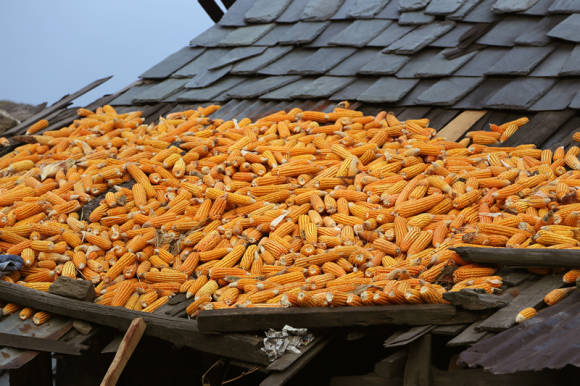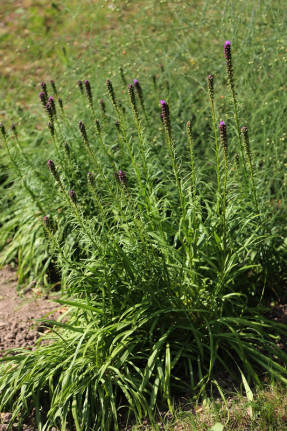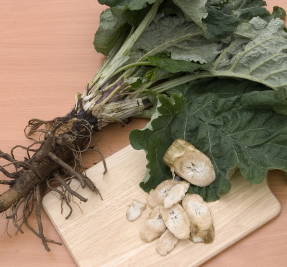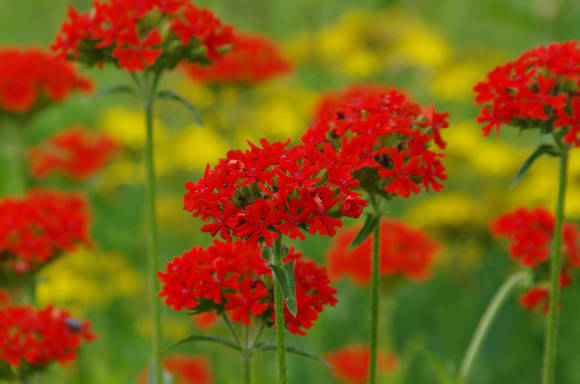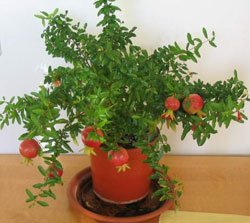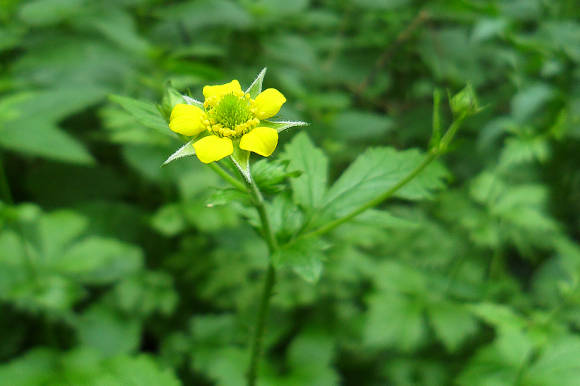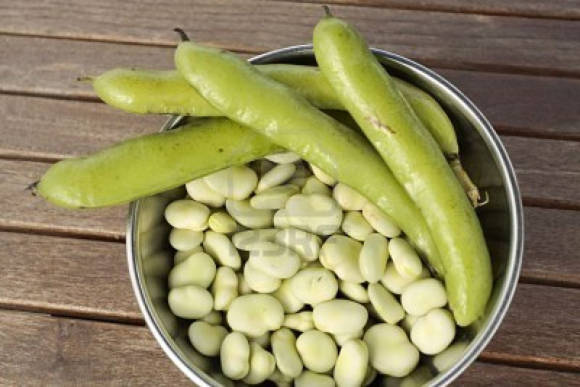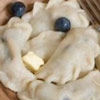Milk thistle (Silybum marianum L.) from the Asteraceae family is mainly a biennial plant with a high simple or weakly branching stem.
Sometimes milk thistle is grown by gardeners as an ornamental plant (its names are known: spicy-variegated, variegated thistle, Mary's thorns, thorns, etc.), but more often they perceive it as a weed, since this thorny plant very quickly spreads over the site.
 |  |
Botanical portrait
This original and beautiful, ornamental plant can reach a height of 120–150 cm. Its large leaves up to 40 cm long and up to 18 cm wide are unlike any other. They are oblong-oval, dark green, with transverse wavy shiny white spots and streaks. The lower leaves are collected in rosettes.

The edges of the leaves are angular-lobed, with yellow, very sharp thorns. The same thorns are found on the underside of the leaves along the veins. It is from here that the popular name of this plant comes from.
Milk thistle blooms from mid-summer to autumn. Its inflorescences are large, single, located at the ends of the stem and lateral shoots, they also have thorns. All flowers are tubular, pink, purple or white, collected in large baskets, bloom from June to autumn. When ripe, the achenes crumble and germinate quickly, which is why milk thistle reproduces very well by self-sowing.
 |  |
Recently, milk thistle has been cultivated as an ornamental plant, and also used to create hedges that are absolutely impenetrable for people and animals.
Growing milk thistle
At the same time, in culture, milk thistle is unpretentious and practically does not require any care. She loves sunny places, but also tolerates partial shade. It is cold-resistant and drought-resistant. It can grow on any soil, but well-drained loams are most favorable for it.
It is easiest to propagate it by sowing seeds or seedlings. Sowing can be done in spring or early summer, as well as in autumn. It is advisable to soak the seeds for 8-10 hours before sowing. At the same time, it is advisable to use the seeds of the last year's harvest, because, after lying for several years, they lose their germination.
To grow seedlings, seeds are sown in grooves to a depth of 2–2.5 cm a month before planting in the ground. Before planting, it is advisable to add 1 tbsp to each hole. spoonful of ash. Milk thistle shoots appear 12-15 days after sowing.
The growth of rosettes is stimulated by loose nutritious soil, and the formation of peduncles is stimulated by phosphorus and potassium dressing. Moreover, it blooms often in the year of sowing. Outlets tolerate frosts down to -6 ° C.

Collection of medicinal raw materials
Milk thistle blooms in late July and blooms until autumn. When the baskets begin to turn yellow, and fluffs appear from them - the carriers of seeds, the heads are cut off and they are allowed to dry for a week. After that, they are husked to obtain seeds - the main medicinal raw material. But the leaves and roots of milk thistle have medicinal properties.
For treatment, the roots and seeds of milk thistle are used. The roots are dug up in the fall. And the time for collecting seeds is the end of summer and the beginning of autumn, for this the entire aerial part of the plant is cut off, which is then dried and threshed.
Final drying takes place in the fresh air or in special dryers at temperatures up to + 50 ° C. An important stage is the purification of raw materials from impurities.
Medicinal properties
Milk thistle is a medicinal plant. In Bulgaria, this plant is even called the gift of the Virgin Mary. For medicinal purposes, its seeds are used (without a tuft). They contain substances that accumulate in the cells of the liver and gallbladder and enhance the blood-purifying function of the liver.
It has been proven by modern science that the flavolignans found in all parts of the plant (the most important of them is silymarin) have a beneficial effect on the metabolism, allow the liver to restore function even with severe toxic lesions.
Scientific research also clinically demonstrates the efficacy of milk thistle for liver dysfunction. It stimulates bile formation and bile excretion, has a beneficial effect in the treatment of hepatitis, cirrhosis and other liver diseases, and helps to relieve intoxication.
Milk thistle perfectly activates the liver, accelerates the formation of new cells and the restoration of this most important organ. Milk thistle is an important remedy in the treatment of alcohol addiction. Contraindications for the use of milk thistle and poyuchny actions have not been established. At the same time, natural recipes from its seeds are much stronger than tablets.
Milk thistle seed oil neutralizes the harm caused to the body by alcohol and toxic substances. It activates metabolic processes, enhances immunity, and has a wound-healing effect.

Preparation of medicinal potions
For cooking decoction of seeds you need 2 tbsp. grind tablespoons of seeds with a coffee grinder, pour 0.5 liters of water and boil over low heat until half of the liquid evaporates. Then strain and drink 1 tbsp. spoon every hour 7-8 times a day. The course of treatment is 1 month. In this case, it is necessary to exclude fats and alcohol from the menu.
You can also take the seeds as dry powder 1 teaspoon 3-4 times daily before meals, washed down with plenty of warm water.
For medicinal purposes, roots are dug up in the fall, washed with cold water and dried at a temperature of +45 ... + 50 ° С.
For the treatment of sciatica and joint pain, use decoction of roots at the rate of 1 tbsp. a spoonful of raw materials for 1 cup of boiling water. Raw materials are boiled in a sealed enamel bowl in a water bath for 30 minutes, filtered hot and taken in 1 tbsp. spoon 3 times daily before meals.
Among other things, young leaves and petioles of milk thistle are widely used for food, sometimes the petioles are bleached. A receptacle like that of an artichoke is also used for food.
Milk thistle is included in the pharmacopoeia of Russia and most countries of Western Europe. In pharmacies you can find milk thistle extract and tincture and its preparations Cholelitin, Silibor, Legalon and Carsil.
"Ural gardener", No. 27, 2017
